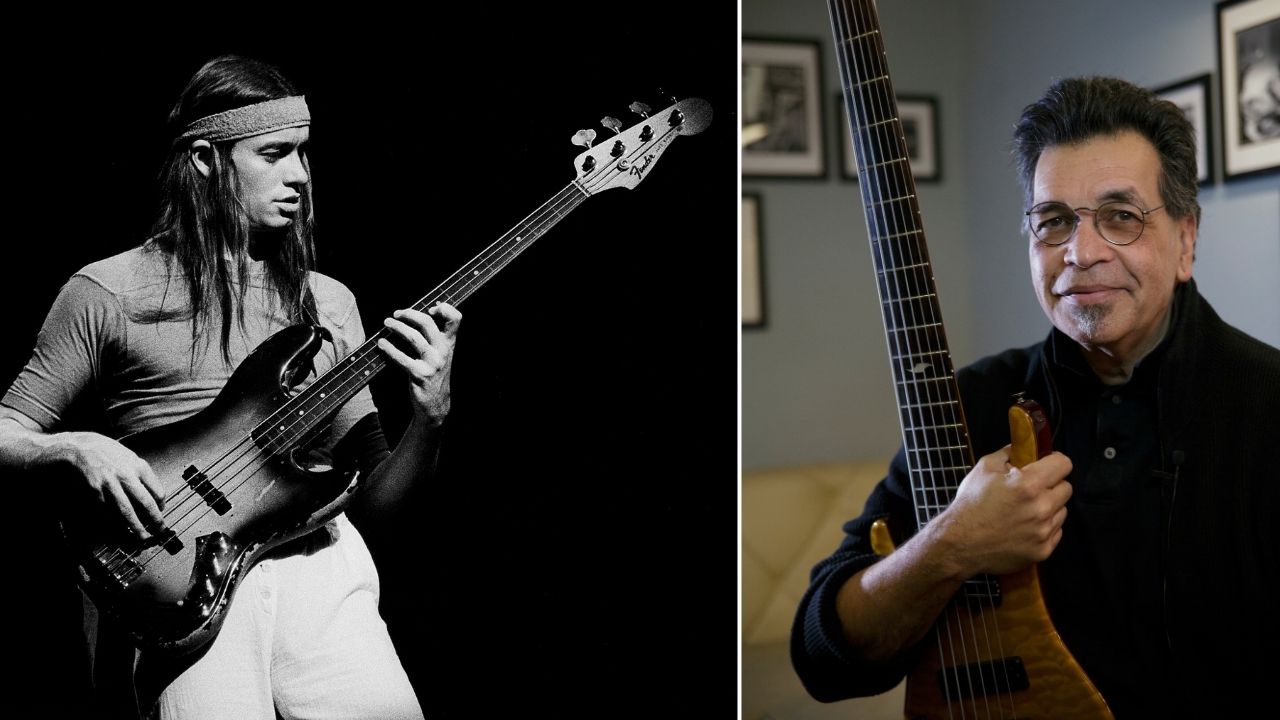Best blues amps 2025: electric guitar amplification for when the thrill is gone
Guitar World picks out 12 of the best blues amps from Fender, MESA/Boogie, Marshall and more
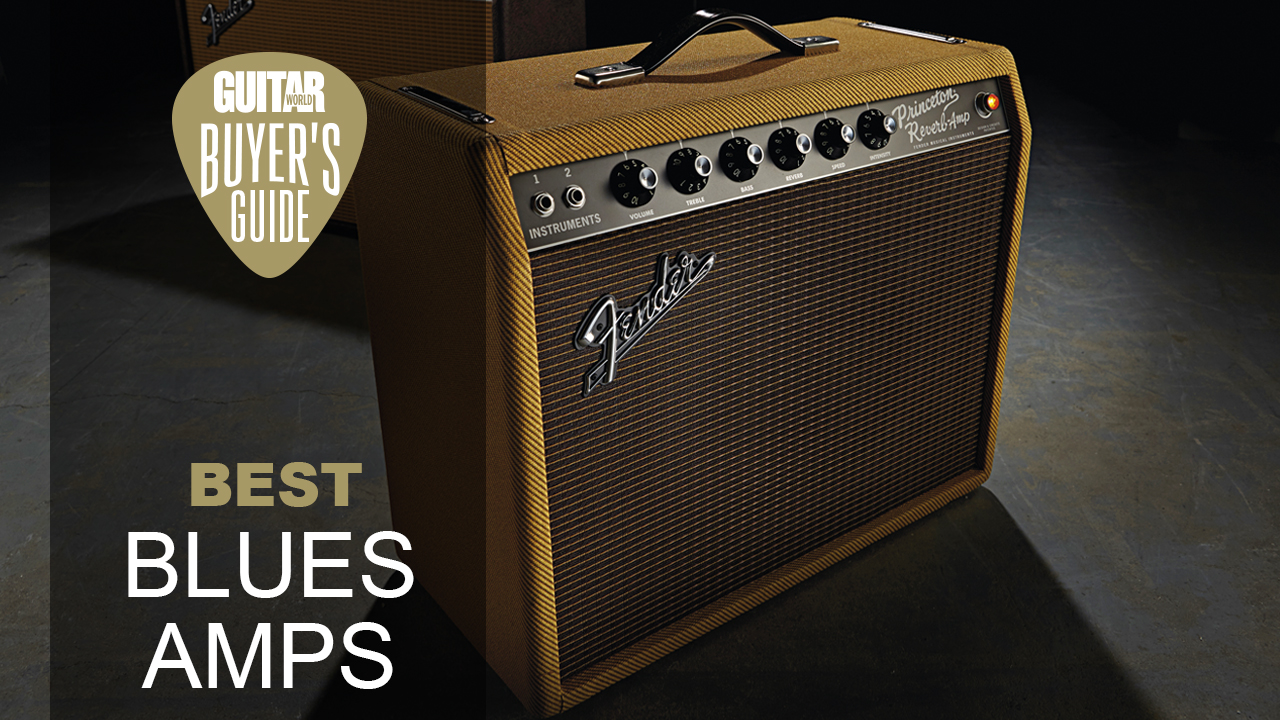
So, why a guide to the best blues amps? An amp is an amp, right? Wrong. Ask any pro and they’ll tell you that finding the right amplifier is one of the most difficult parts of the job. The guitars come easily – nine times out of 10, they choose you. Amplifiers? Not so much. And this is a big deal because the amplifier is mission-critical for a great guitar tone. You could play the best guitar in the world through the worst amp in the world and it would sound lifeless. Put the worst guitar through the best amp, however, and you’re in with a good chance that the guitar will sing.
When it comes to blues guitar – which leans heavily on dynamics and expression – your choice of amplifier is even more important. With the blues being so primal, it’s doubtful you’ll want to lean on a well-stocked pedalboard to sauce the stew. Apart from the odd low-gain overdrive, it’ll just be you, your guitar, your amp, and your demons.
So, you woke up this morning, your partner is gone, the dog’s pooped on the rug, the repo man has come and taken your car, and the welfare has turned its back on you? There’s an amp for that – and we’re going to help you find it.
Best blues amps: Guitar World’s Choice
Compact and packed with classic Fender tones, the Fender Blues Junior IV is a phenomenal amplifier for the price. It has a fuss-free control panel, with a three-band EQ and on-board spring reverb to add some three-dimensional sweetness to your sound – plus it takes pedals well. A modern classic.
The MESA/Boogie California Tweed 6V6 has the finest Tweed tones going, all without the crankiness of a vintage model, and with added features that make it a no-brainer for today’s player. Sure, it’s a single-channel amp – one of the most straightforward MESA models – but its clever Multi-Watt feature offers five switchable power options, from 40W down to two. There’s tube-driven reverb, lushness, and hot drive when it gets going.
Best blues amps: Product guide

1. Fender Blues Junior IV
Our expert review:
Specifications
Reasons to buy
Reasons to avoid
Ever since its launch in 1995, the Blues Junior has been a smash-hit with guitar players looking for Fender spankiness and BBQ-hot, overdriven tones on a budget. The amp has assumed many guises over the years. We’ve seen ’em in Lacquered Tweed, Sonic Blue – and 2019’s limited- edition L.A. Vice model in Hot Pink/Seafoam Green was particularly eye-catching. Officially, we are now on version IV, but the recipe remains familiar, offering a lot of amp for the money.
Loud enough for small gigs (as long as you don’t have a mean drummer and don’t mind a little break-up), the Blues Junior IV has a single 12” Celestion A-Type speaker housed in a particle board cabinet. It’s a single-channel affair, with a straightforward control panel that features chickenhead dials for volume, treble, middle, bass, master volume and reverb, and a Fat switch that tightens up the low end and adds some gain on demand.
The clean tones are on-the-money for fans of Fender chime. This is a bright and articulate amplifier. But above all, it’s fun. The reverb adds some lovely three-dimensionality and a little damp to your tone; and when you turn up the heat, the Blues Junior IV will reward you with some truly musical crunch. It’ll cover a multitude of blues styles.
Turn the master up high and keep the preamp volume low, and you’ll get some candied cleans for sweet and creamy humbucker blues or traditional Strat/Tele shenanigans. Take it to the edge of break-up, throw a Tube Screamer in front of it, and it’ll get you in the same ballpark as Stevie Ray Vaughan. Alternatively, just dime it and use your guitar’s volume control to keep things orderly. Whichever way you slice it, this is an affordable, pedal-friendly modern classic.
Read the full Fender Blues Junior IV review

2. MESA/Boogie California Tweed 6V6
Our expert review:
Specifications
Reasons to buy
Reasons to avoid
What could well be the most straightforward Boogie we’ve ever seen might also be one of the best. Certainly, this model is in the conversation, offering a thrilling adaptation of Fender’s Tweed era in a practical, impeccably designed format.
This weighty amp commands an eye-watering price, but you get what you pay for. The build quality is exceptional. There are two inputs – one padded to give you a little more headroom – while the Multi-Watt feature allows you to operate the amp at a full 40W or all the way down to 2W. No matter where you position that five-way rotary dial, great tone awaits.
The design is so clean. Look at that front panel. Gain, treble, middle, bass, presence, a master volume control and reverb. That’s it. As with its siblings in the Boogie showroom, this amp boasts huge tone-shaping power, but there’s little need to reach for the manual here.
You get all the natural assets for blues, including touch-sensitivity, solid bottom end, crystal-clear treble and sumptuous long-tank spring reverb. But with its buffered series effects loop, you can count on the California Tweed 6V6 to excel in a variety of musical contexts.

Specifications
Reasons to buy
Reasons to avoid
The CUB-SUPER12 does its best to remain modest, with a price tag that sits squarely in the lower band for a mid-priced tube combo. But it doesn’t fool us. This is a boutique amp in a production-line amp’s Tolex and, frankly, it has no right to sound as good as it does. This stylish little combo has pretty much everything that a blues player could want.
With a trio of 12AX7s in the preamp and a power section driven by a pair of EL84s, it has plenty of volume – 15 loud watts, as they say – that can be housetrained with an on-board attenuator. Simply plug into the low-power input and you’ll have a one-watter that is perfect for home practice or recording situations when you want to throttle the amp without putting too much volume through a delicate mic. We should note that it records very well. There’s nary any hiss.
Also, it takes pedals well, with a dedicated effects loop on hand, and has a footswitchable digital reverb and on-board boost. Now, the word ‘digital’ can be a real passion killer to old-school blues purists, but this takes the spring reverb algorithm from Laney’s Black Country Customs Secret Path pedal and gives it a new three-dimensional twist, musical and inspiring.
The three-band EQ is powerful and smooth – dialing in a tone is easy, and there are plenty of sweet spots to find. The cleans are big and warm, as opposed to cold and glassy, and even at low volumes it retains its exceptional bass response. As for the overdrive, it has a Tweedy flavor that’ll be mother’s milk to blues players.
Read the full Laney CUB-SUPER12 review
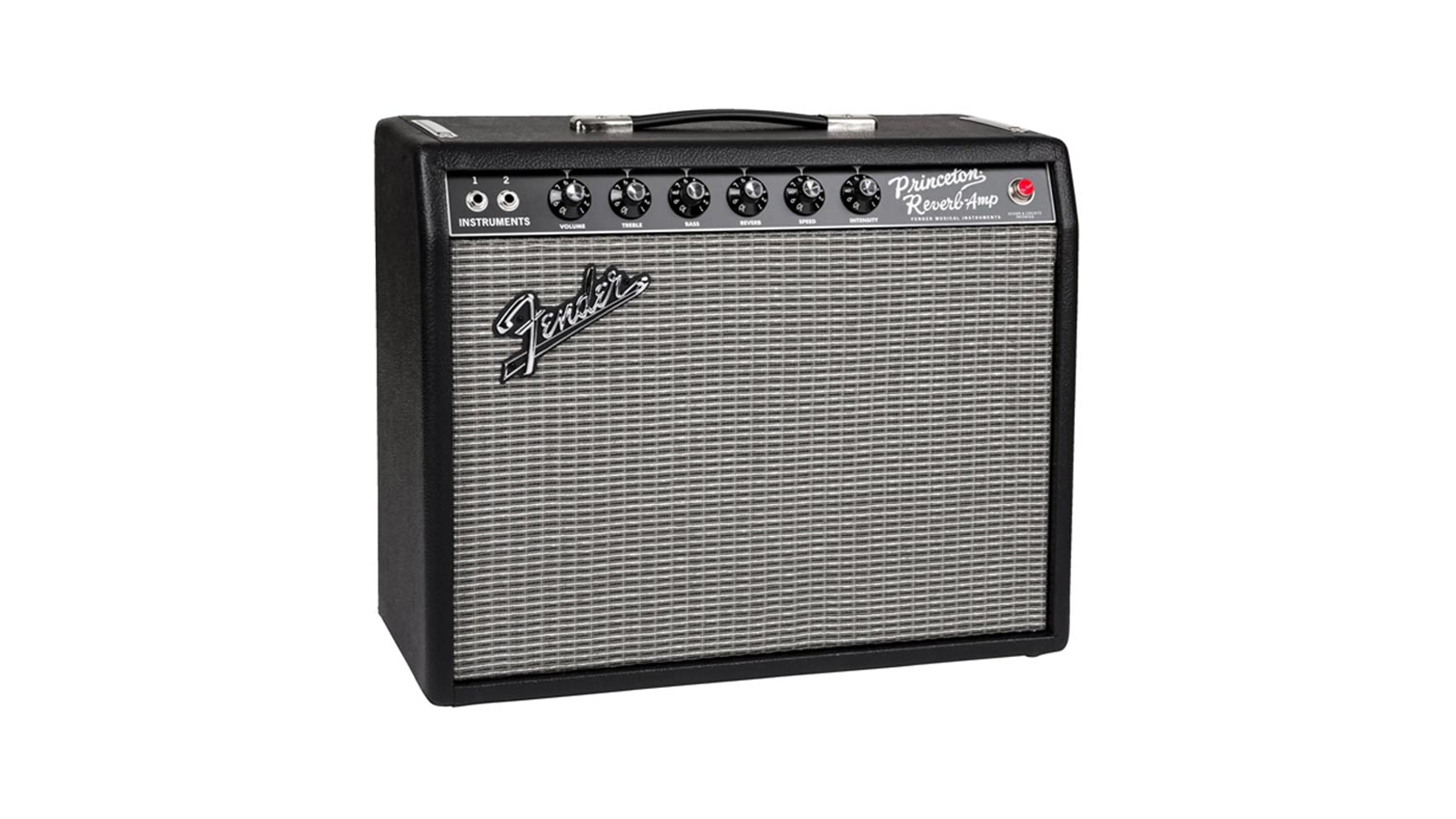
4. Fender ’65 Princeton Reverb
Our expert review:
Specifications
Reasons to buy
Reasons to avoid
You can’t have a discussion about the best blues amps without mentioning the Fender ’65 Princeton Reverb. For many, it’s the Goldilocks option. Not too big, not too small, it’s been the go-to 1x10 combo for studio musicians and those playing small gigs.
The ’65 Princeton Reverb is an amplifier of abundant yet simple pleasures. It has that quintessential American EQ profile – super-solid in the low end, bright and peppy in the high end – and it sweetens it all with a tube-driven reverb and on-board tremolo that legions of pedal designers have strived to replicate.
Its overdrive is hot and raunchy, super-dynamic and fun, whether you are using single-coils or humbuckers. But, of course, many blues players might choose to run it with just a little bit of break-up, adding an overdrive pedal in front of it for when they need a de facto dirty channel for soloing. The Ibanez Tube Screamer is ideal for such activities and remains a popular addition to the ’65 Princeton Reverb owner’s tool kit.
There are two inputs – one padded to take 6dB off the input volume and offer you a little more headroom – but only one channel. The reverb and tremolo are footswitchable, and the amp plays nicely with pedalboards, too. The ’65 Princeton Reverb? We’re talking blue-chip Ivy League tones.
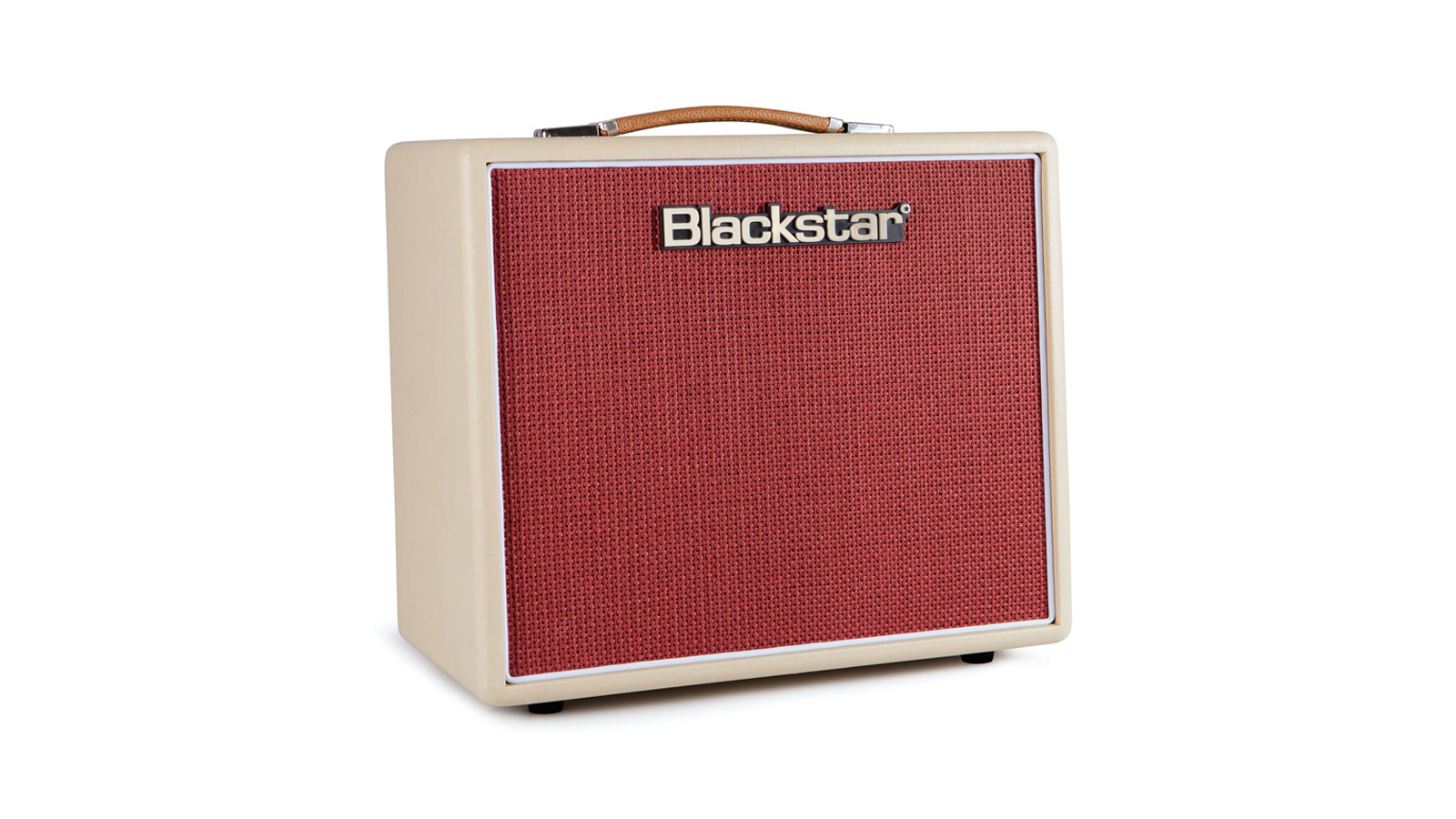
5. Blackstar Studio 10 6L6
Our expert review:
Specifications
Reasons to buy
Reasons to avoid
A single-ended, Class A amp, the Studio 10 is offered with a choice of 6L6, EL34 or KT88 power tubes, each of which endows the amplifier with a different dynamic response. The 6L6 variant brings a distinctly transatlantic accent. There is less of the midrange girth and chewy grittiness of the EL34 model, while the contemporary grind of the KT88 is also greatly reduced. This is all about solid low end, bright highs and that smooth drive you would ordinarily associate with American tube amps.
As for the user experience… Well, the control panel could scarcely be more simple; there are cream-colored chickenhead knobs for gain, tone, reverb and master volume, plus a push-button to activate a Drive function. And that’s it. The Drive circuit is taken from Blackstar’s HT-Drive pedal and can offer quite a lot of saturation to complement those spanky Fender-esque cleans. It’s also footswitchable (as is the reverb), which comes in very handy. The footswitch is included in the deal.
When you add it all up – the tones, the style, the fuss-free design, the effects loop and the speaker-emulated output – the Studio 10 6L6 makes perfect sense.
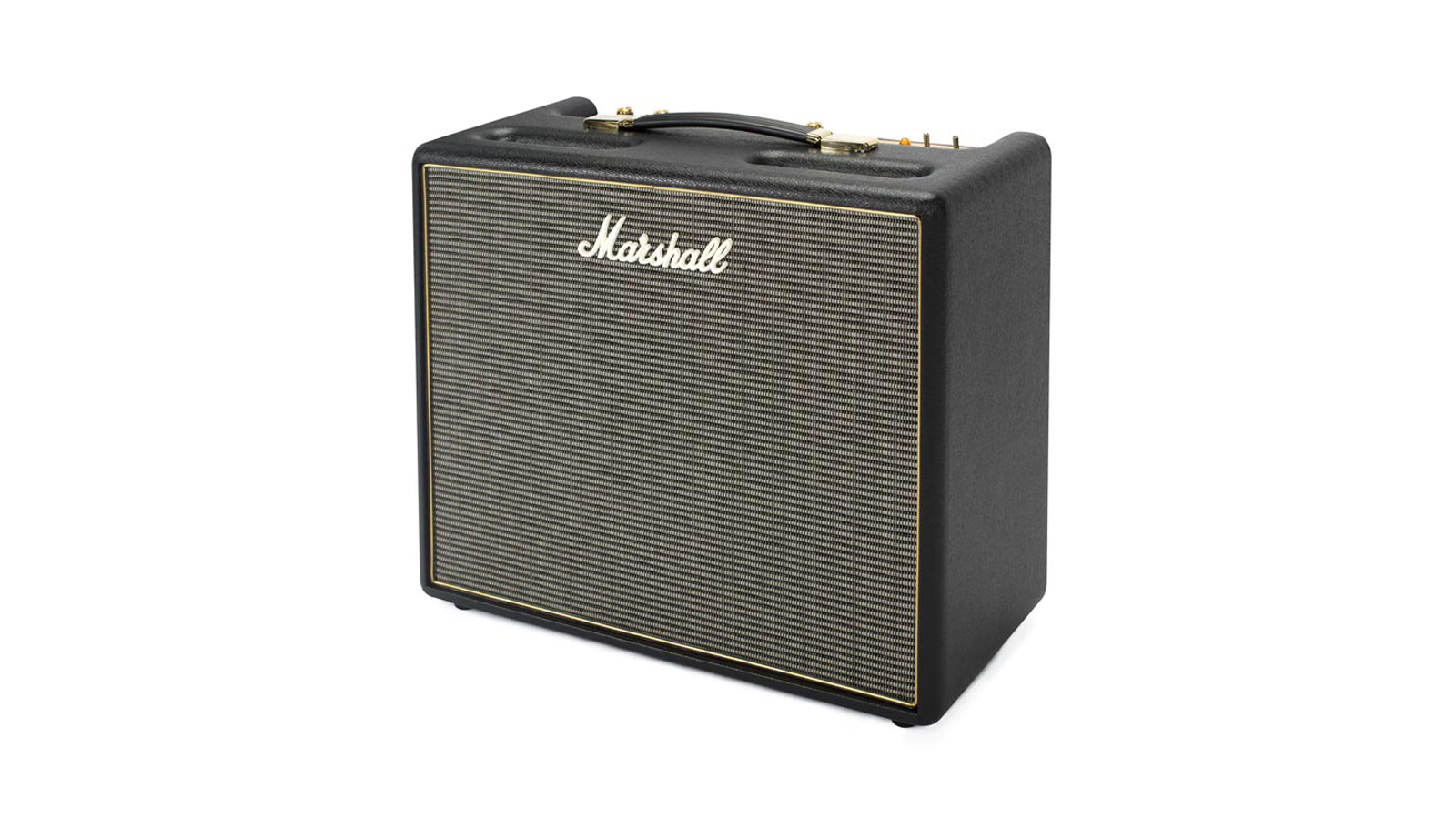
6. Marshall Origin20C
Our expert review:
Specifications
Reasons to buy
Reasons to avoid
We would all like a vintage Marshall but they cost a lot of money, and they’re kind of ornery. You have to turn them up really loud, and that’s often impractical in today’s world. What if we could get some of that characterful mid-range grind and the magic of early Marshall cleans in a manageable combo format – with an effects loop, too, because this is the 21st century? This is where the Origin series comes in.
As with many of the amps here, there’s a simplicity to the design that doesn’t come at the price of versatility. OK, so it’s a single-channel combo, but there’s a push/pull gain boost – engaged via footswitch – that gives the front end of the amp a good thump of clean gain for classic British drive tones. That footswitch (supplied with the amp) can also be used to bring the effects loop in and out of your signal. So, already, before you’ve even touched the gold control panel, you’ve got options that make the most of a single-channel set-up.
On the control panel you’ve got three-band EQ, with controls for gain, master volume, presence and tilt. The latter is very interesting, as it lets you blend bright and normal sounds in the same way as you would’ve when patching the channels on an old Marshall, enhancing control of your high end. This is not a high-gain amp by any means, but dime it with the gain boost engaged and it will present you with a super-aggro crunch that’s perfect for more muscular blues styles.
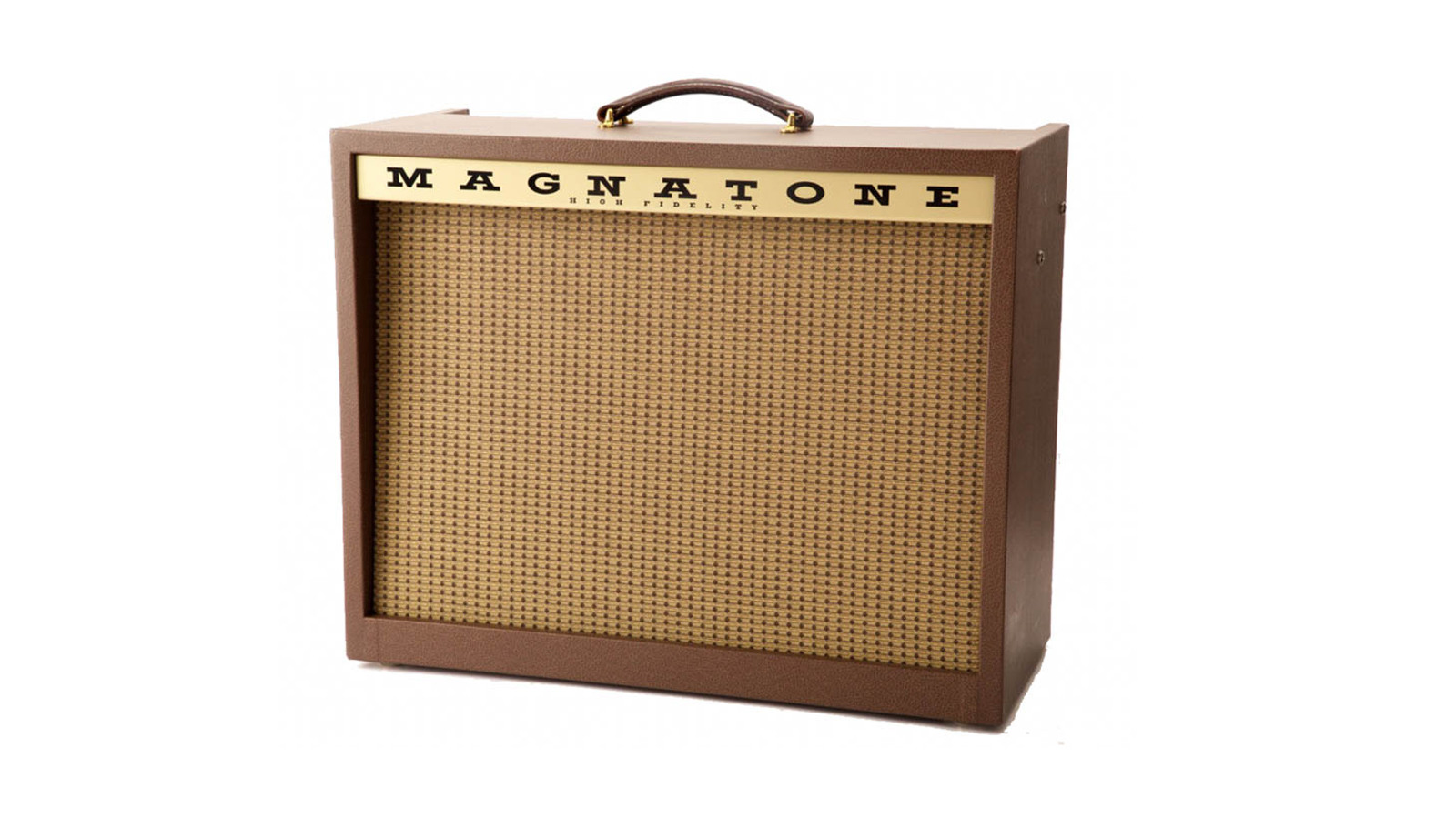
7. Magnatone Varsity Reverb
Our expert review:
Specifications
Reasons to buy
Reasons to avoid
Magnatone has gone from strength to strength since its 2013 resurrection, and the manufacturer now offers a wide range of amplifiers inspired by its own all-American designs – not to mention models such as the Super Fifty-Nine, which provide an EL34-driven taste of British crunch. The Varsity Reverb is one of the former, and is resplendent in the brown and gold you’d associate with vintage Magnatone.
A favorite of Jeff Beck’s, the Varsity is a push-pull tube combo powered by a pair of EL84s. It has one channel, with all its controls, inputs and outputs mounted on an angled panel at the top of the amplifier. There are controls for volume, bass, treble and reverb, along with a negative feedback switch that has two inputs, plus footswitch, line-out and speaker outputs.
The negative feedback feature effectively acts as a ‘more’ switch. More juice, more drive, a little more harmonically rich tube heat to dig into. Helpfully, it is footswitchable – as is the reverb – and it’s almost like having a second channel, albeit with both channels sharing the tone stack.
The build is faultless, the tones off the charts. Like the Princeton, there are high-sensitivity and low-sensitivity inputs, the latter taking -6dB off the input to make more headroom or to simply adjust to an instrument with hotter pick-ups. There’s no vibrato here, which might disappoint some, but the tube-driven, full-length Accutronics spring reverb is a marvel. Considering the price of some of the alternative boutique options, the Varsity represents decent value.
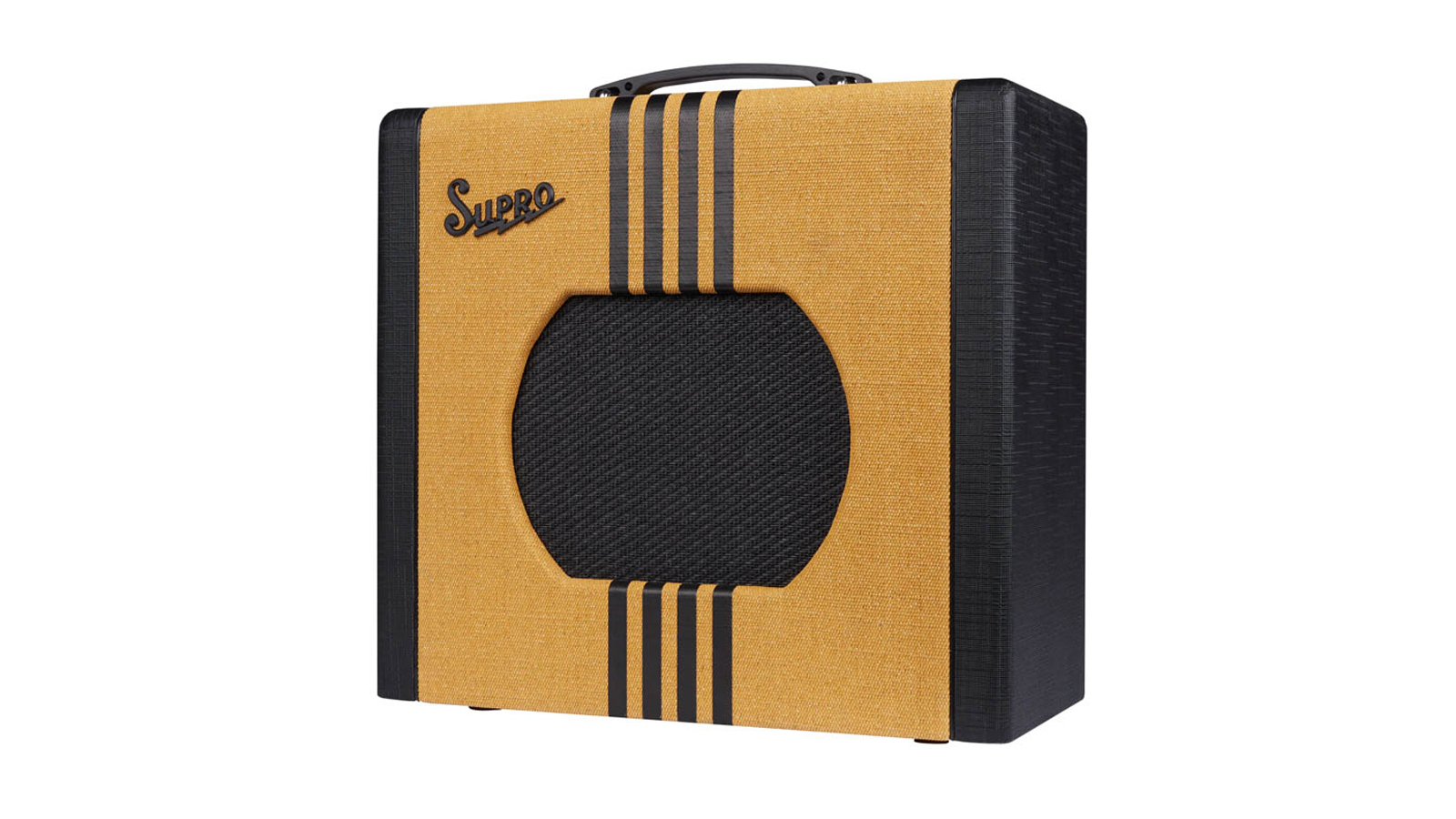
8. Supro Delta King 10
Our expert review:
Specifications
Reasons to buy
Reasons to avoid
Closely related to Supro’s similarly awesome Blues King series, the Delta King offers affordable and compact tube amps for blues and rock ’n’ roll players. The build and design of these amplifiers are second to none. The aesthetic is cribbed from the Supro Valco archives, with the striped design redolent of the early-’50s models.
But if the cabinet design owes a debt to antiquity, the brain and guts of the amplifier are more in tune with the 21st-century trend of high-functioning yet eminently affordable tube amplifiers.
The retro poplar cabinet houses a custom 10” Supro DK10 speaker. On the top you have controls for volume, bass, treble, reverb and master volume, with switches for drive and boost. The boost is FET-driven and will work gangbusters with single-coil pick-ups when it’s time to take a solo, while the drive mode engages a Pigtronix Fat high gain that can get pretty gnarly. A footswitch (sold separately) can toggle the boost and drive modes on and off.
While the master volume helps you keep things sane for domestic practice, there is an impressive amount of volume from this little 5W amp. Its Class A, 6V6-driven power stage can hold its own. The analog spring reverb is well-tuned and, while it’s disappointing that this isn’t also footswitchable, the Delta King 10 makes up for that with a most-excellent emulated line-out that provides a simple, effective solution for recording.
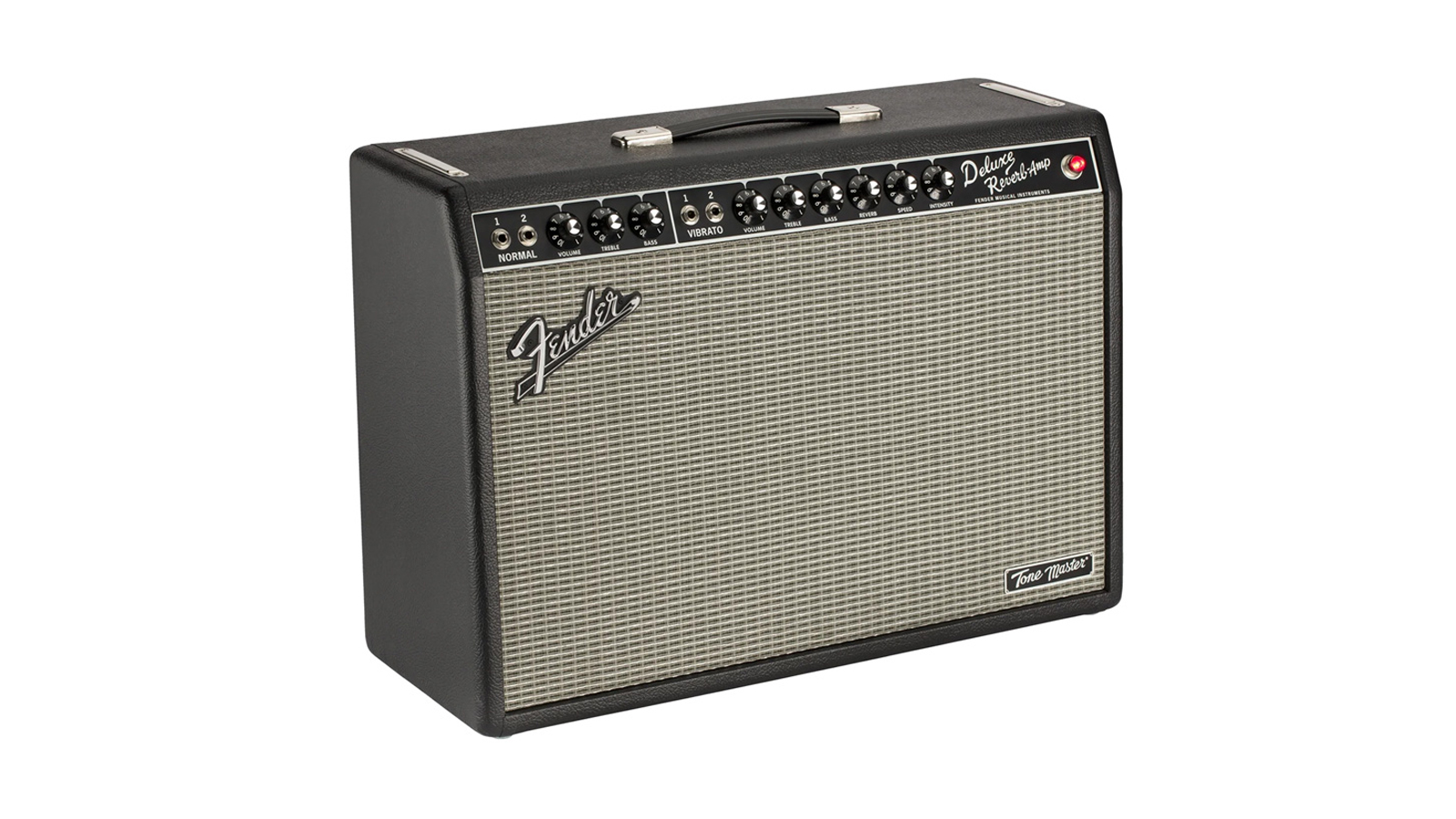
Specifications
Reasons to buy
Reasons to avoid
It’s always fun picking up a Tone Master Deluxe Reverb in front of an analog lifer who’s used to bending their knees and keeping their back straight when porting an original all-tube model. All that heavy lifting is taken out of the equation by the TMDR’s lightweight cabinet, neodymium speaker and digital architecture. There really is no disputing the convenience of digital. There are no tubes to replace, no adjusting the bias after a few nights on the road. The Tone Master version of the Deluxe Reverb also features power-scaling so you can reach those saturated tones at manageable volumes.
What does it sound like? Like a Deluxe Reverb, of course! And you’ll have heard it on a million records. The response is the same. This 100W modeling amp is as loud as a 22W tube DR, and it’s designed to offer the same amount of headroom. Just as the original tube amp overdrive didn’t get going until the volume dial got halfway round its travel, neither does the Tone Master’s. But the Tone Master’s secret weapon is that attenuator on the rear of the amp. You can switch it down from a simulated 22W (full power on a traditional all-tube Deluxe Reverb) to 0.2W, and it’ll sound incredible.
Other mod cons include a speaker-emulated XLR output and two on-board impulse responses; one emulating a speaker mic’d with a Shure SM57, the other with a Sennheiser MD 421-II. Alternatively, select the flat response and use your own IRs.
Read the full Fender Tone Master Deluxe Reverb review
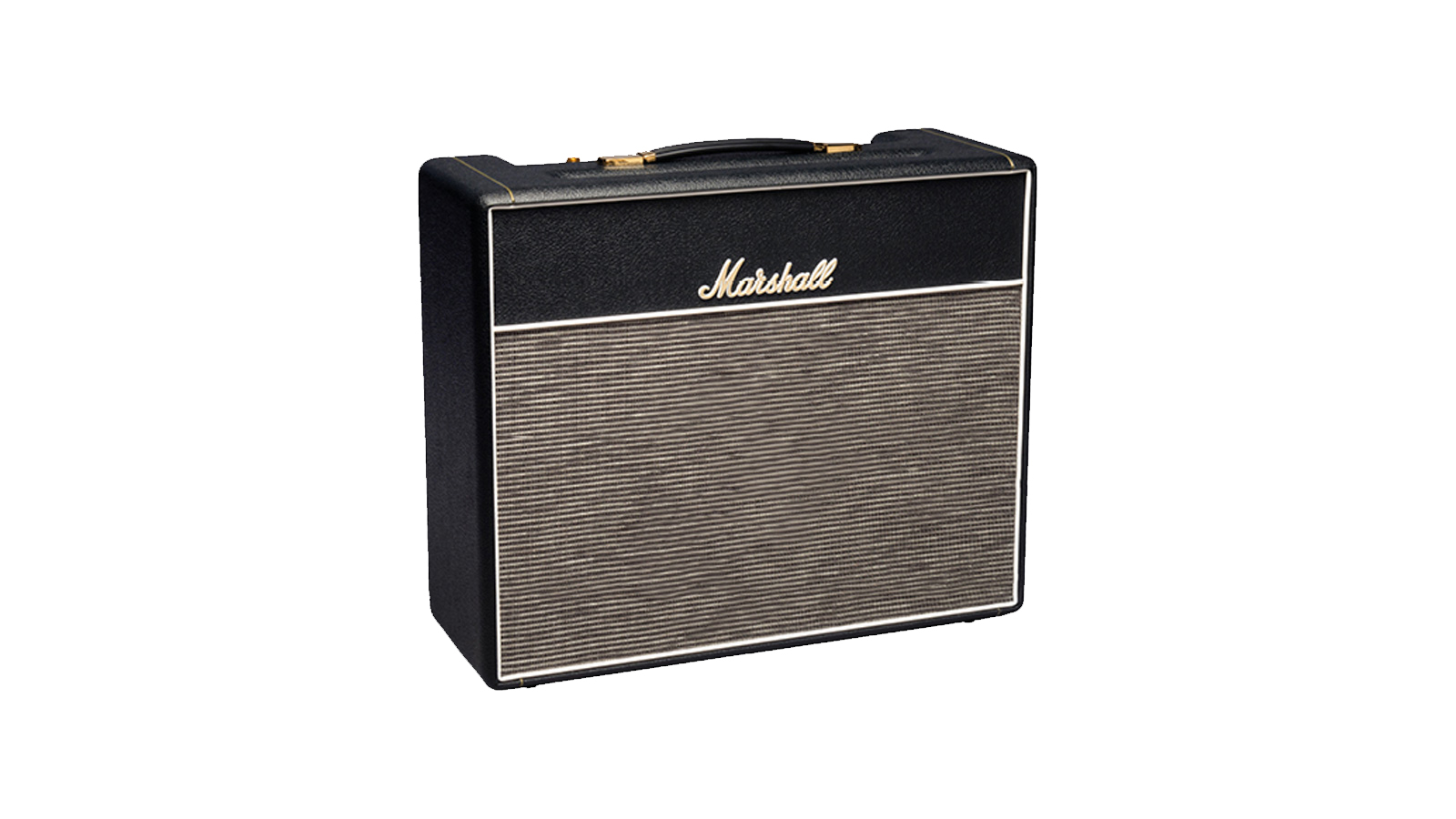
10. Marshall 1974X Handwired
Our expert review:
Specifications
Reasons to buy
Reasons to avoid
If the Origin series offers a taste of vintage Marshall tones, then this is the unsweetened, undiluted real deal. A handwired replica of the late-’60s 1974 combo, this 18W, two-channel combo is Marshall performing a boutique reenactment of its storied history – and it sounds incredible.
The attention to detail here is incredible. What starts with a point-to-point, hand-wired tag board circuit, and transformers recreated from scratch by Dagnall Electronics, ends with a Celestion T1221 that’s been aged to soften its response, just as a vintage model does over time. This is the speaker-speccing equivalent of torrefied spruce on an acoustic guitar.
You will, of course, recognize the look of this amp. The grey and white striped Bluesbreaker grill cloth returns. Plugging in, you’ll be familiar with the tones too. This is for the Beano enthusiasts, all those who stenciled “Clapton is God” on their high-school locker, and anyone who wants to play the blues with a British accent. The 1974X Handwired places the emphasis on warm, artery-clogging cream tones, but tightens up when you dig in. It’s a doozy.
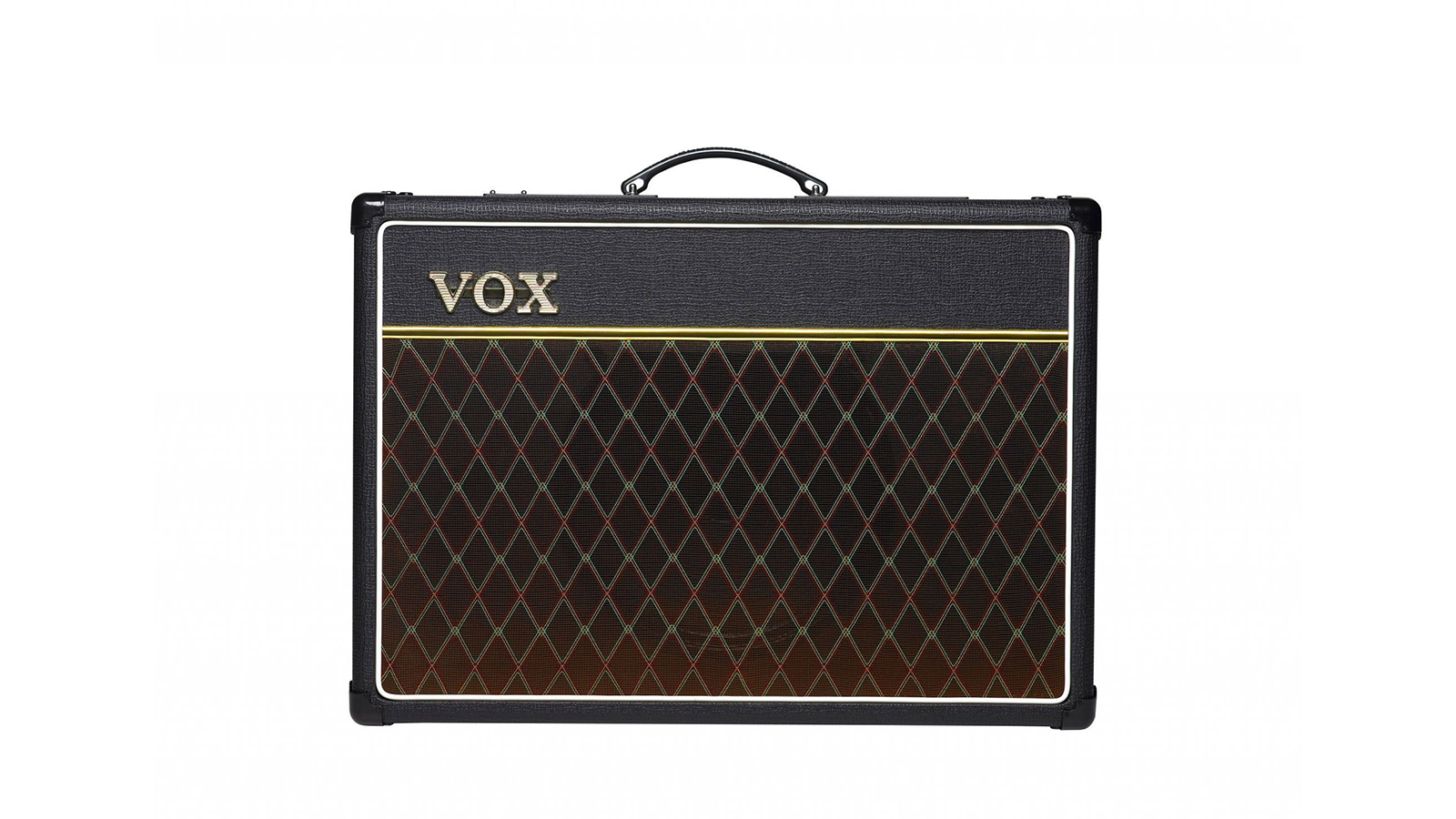
11. Vox AC15C2
Our expert review:
Specifications
Reasons to buy
Reasons to avoid
Think Vox amps and the blues, and you immediately conjure up an image of Rory Gallagher. The late Irish blues-rock phenom favored an AC30 with a Dallas Rangemaster and drove it hard, rolling the volume back on his guitar to adjust how much fire he wanted in his signal. Gallagher’s approach had an influence that spread far beyond the blues, with Brian May switching to Vox on account of him. The rest is history.
For today’s blues player, however, the Vox AC chime has plenty to offer; it’s just so musical, and will breathe life into anyone’s licks. The AC15C2 is what we’d like to think of as the sensible tube amp in the Vox line-up. It’s sensibly priced, and gives up the goods without tearing the paint off the walls.
There are two channels, though good luck in trying to wean yourself off the Top Boost channel. Like Rory, you might not be able to resist the urge to dime it and let your guitar’s control circuit keep things orderly. The overdrive is harmonically rich and textured.
The 2x12 set-up helps to fill the room with sound, and there should be enough juice here to wrestle your way through a live mix. The reverb and tremolo are footswitchable and super-sweet.
It’s strange that Vox never made a name for the blues in the same way that it did for pop and rock ’n’ roll. Gallagher was something of an outlier. But then again, that’s a big plus point, right? After all, finding a blues tone that’s all your own might well require an unorthodox choice.

12. Orange Rocker 15
Our expert review:
Specifications
Reasons to buy
Reasons to avoid
Designed by Orange’s technical director, Adrian Emsley, the Orange Rocker 15 has an all-valve signal path, and two channels – Natural and Dirty. The Dirty channel is what you might expect from the British amp titan – plenty of bright drive and rich, musical grind that’ll elbow its way through the mix, and a control panel that’ll have you momentarily bamboozled until you learn which glyph does what.
The Natural channel is something completely different. Here, you’ve only got a volume control, making for a wholly transparent channel that enables you to run your guitar and effects uncolored by EQ or any of that crazy palaver. In practice, it offers crystal cleans at low volume, with some grit arriving as you turn it up loud. It makes such obvious sense when you use it, you’ll wonder why more amp manufacturers don’t include a similar channel on their designs.
Channels are selected via the toggle switch on top of the amp, or footswitch. There are ample power-scaling options. The three-position standby switch offers half or full power, while the Bedroom/Headroom switch lets you take the amp down to 0.5W, meaning you can access that pugnacious overdrive without driving the cat out of the room.
Best blues amps: Buying advice
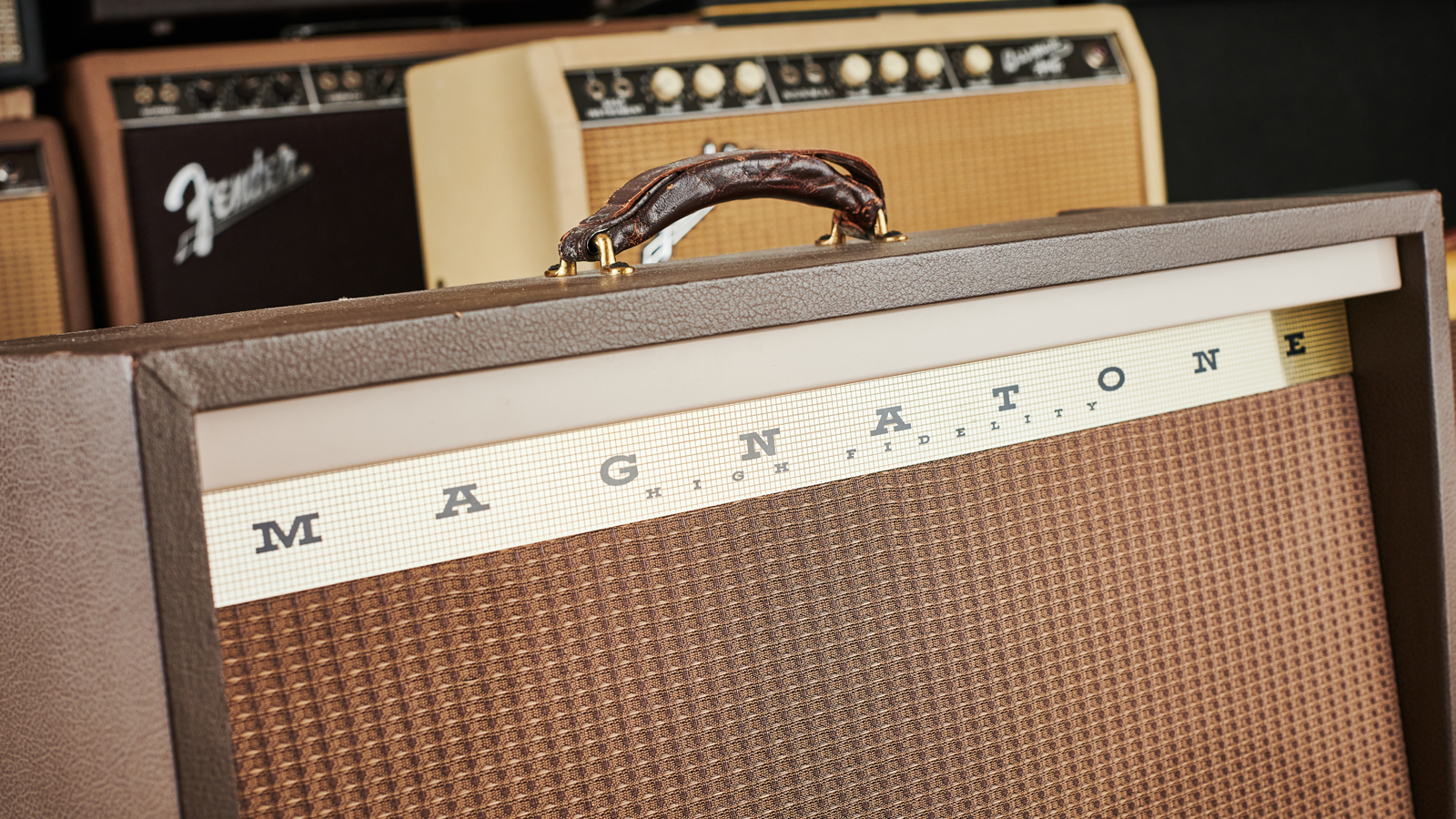
With the blues, you want to put as little between you and your guitar playing as possible. Your tone needs to capture the details – every nuance in the vibrato, string bends and power with which you hit the strings. If we can all agree that we need a dynamic, touch-sensitive response from a blues amp, what’s next? That all depends on how you like your blues.
The blues gospel has spread far and wide. By offering rock ’n’ roll a register to play in, it was inevitable that there should be some overlap between blues and hard rock. With players such as Peter Green, Gary Moore and Eric Clapton, the question of what’s blues and what’s rock is answered by distinctions with few differences. What all this means for blues tone is that there are many ways to get the job done.
At one end of the spectrum, you might have the clean honeypot of B.B. King and the bracing spank of Mr Ice Pick himself, Albert Collins. At the other, the juicy hot drive of Stevie Ray Vaughan, Billy F Gibbons’ Texas sizzle and Hendrix’s overdriven psychedelic approach, for which you’ll need some gain to come into play and show some teeth in that playing.
While a high-gain fire-breather is not unsuitable for blues, the question of gain is key here. It might well help you decide between a tube-driven amplifier and one with solid-state and modeling tech.
Tube vs solid-state and modeling amplifiers
You can trust Guitar World
It’s one of the weird ironies of the age-old debate concerning tube vs transistorized and digital alternatives that there is finally a question worthy of debate. For so long, tube amps were the default choice for most guitar players, on account of their musical warmth and harmonic response – especially if you needed overdrive.
This, of course, was a debate that B.B. King lost little sleep over, having used Fender tube combos and solid-state Lab Series L5 2x12 combos during his career. But then, King eschewed overdrive, and the cleans of the Norlin-built L5 were more than enough for his needs. Something well made, with plenty of headroom and a well-tuned tone stack, would get the job done.
But what about players who like a bit of drive in there? Even in the earliest electric blues recordings, you could find a little break-up in the tone as the amps were pushed, and it wouldn’t be long before the natural hair on Muddy Waters’ I Can’t Be Satisfied would evolve, as players looked for a drive tone with a bit more heat. For them, the tube amplifier was crucial, and for many players weaned on Stevie Ray Vaughan, Gary Moore, Clapton et al, there’s nothing quite like it.
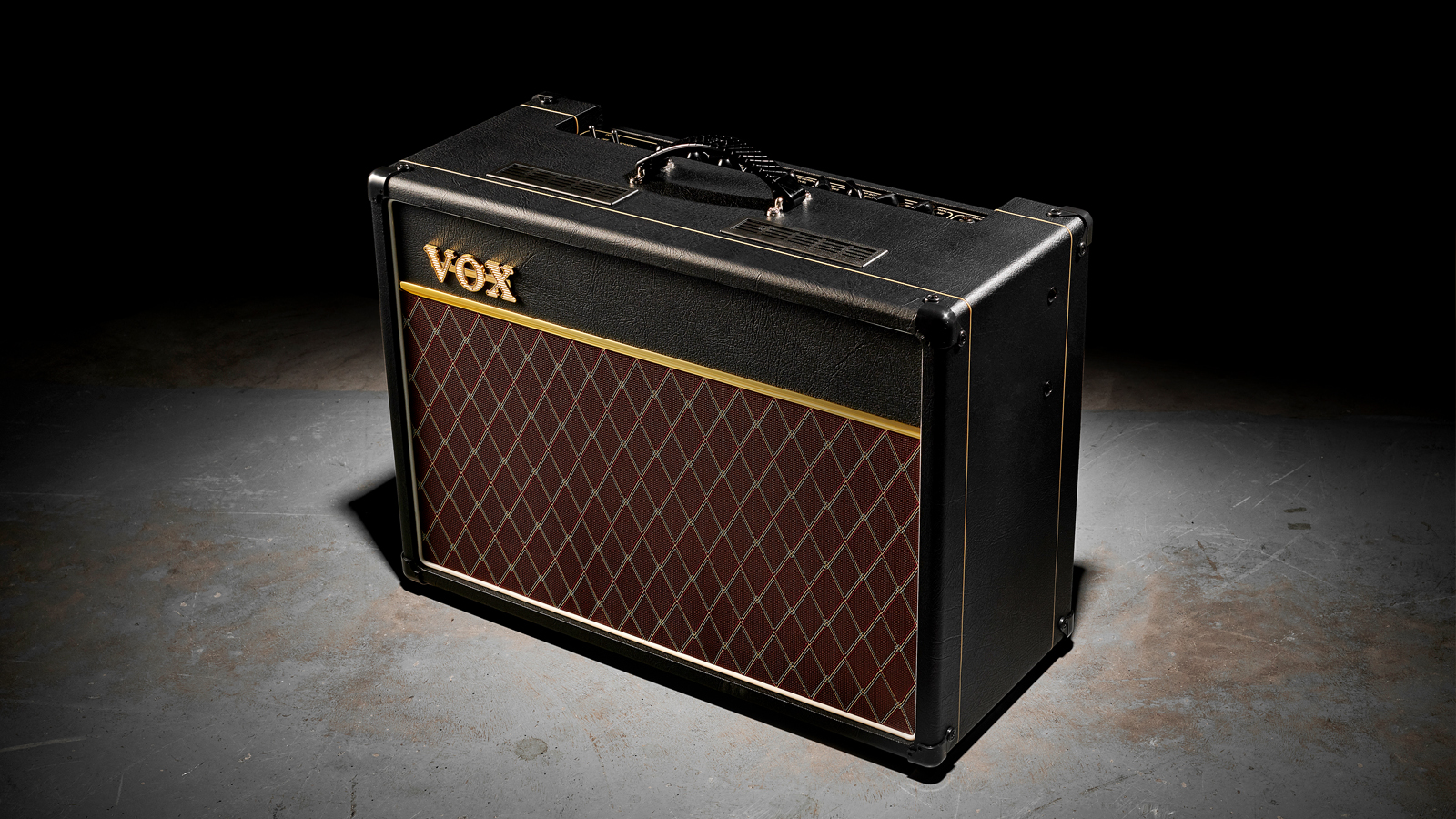
Digital modeling amp tech is getting closer, though, and many players might not be able to tell the difference. Those who can might yet choose a digital option because, to really get the best out of a tube amp, you’ve got to work those power tubes hard, and that can be too loud for many settings – particularly if you live in an apartment building. You might have the blues but you don’t want to give them to your neighbors, too.
Think about where and how you’re going to be using your amp. If you need to be heard over a band, and you want to keep your tone clean, headroom will be invaluable to you. When we think headroom, the Fender Twin Reverb comes to mind. It can keep it clean at some truly painful volume levels. In today’s environment, with on-stage sound limits and the option, of course, to simply mic your amp, that can be overkill.
How much power is too much power?
Be mindful not to get an amplifier that’s too powerful for your needs. You may find that you’ll never get the best out of it, or you may have to run an attenuator or load box to find its sweet spot. Many of today’s amplifiers offer similar on-board power-scaling features – even the modeling amps.
If you like to run your tube amp with a little overdrive, a power-scaling feature can be invaluable, and not just for bedroom players looking for an inspiring tone for practice. Taking the MESA/Boogie California Tweed 6V6 as an example – it can be run at 40W, with an abundance of headroom, or scaled down to 30W, 20W, even 2W, for small gigs, studio applications or simply enjoying some hot tube crunch at a manageable level when playing at home.
On a similar theme, some older amplifier designs – such as the handwired Marshall listed here – have no master volume. Again, these are difficult amps to house-train without a load box, but they can provide off-the-chart vintage tones when turned up loud. Alternatively, tube watts are loud but there are limits; a 5W combo can be the bee’s knees at moderate volume, but if you want a clean tone while competing with a drummer, you can forget it.
Once you’ve found an amp occupying that sweet spot where the perfect volume and break-up share the same space, you’re on the home stretch. Spring reverb can sweeten the deal, and no one will complain if there’s a lush tremolo on board either. But by then, it’s time to trust your ears and feel how that amplifier responds to your playing. Some just feel wrong, as though they’re working against you. The right ones? Well, it’s like we said at the start – they get out of your way and let you play.
Find out more about how we make our recommendations and how we test each of the products in our buyer's guides.
Related buyer's guides
- Grab a British classic with the best Vox amps
- Plug into one of the best Strat-style guitars
- Check out the best Tube Screamer clones
- The best guitar amps under $1,000: combo amps and heads
- Small budget? One of the best guitar amps under $500 should fit the bill
- The best boost pedals for all budgets
- The best bass amps for every level of bass guitarist
- Practice in peace with the best headphones for guitar amps
- Best amp modelers: rack-mounted and floorboard options for every budget
- Turn it up while keeping it down with the best headphone amps for guitar
- Freedom on a budget: the best cheap wireless guitar systems
All the latest guitar news, interviews, lessons, reviews, deals and more, direct to your inbox!
Jonathan Horsley has been writing about guitars since 2005, playing them since 1990, and regularly contributes to publications including Guitar World, MusicRadar and Total Guitar. He uses Jazz III nylon picks, 10s during the week, 9s at the weekend, and shamefully still struggles with rhythm figure one of Van Halen’s Panama.

